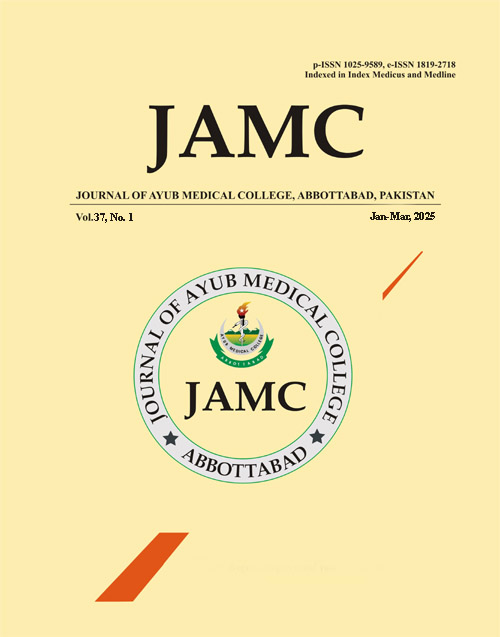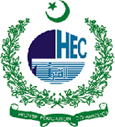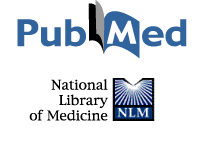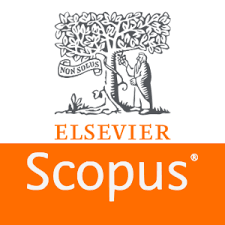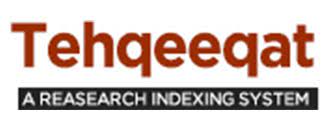RELATION OF RADIOGRAPHIC BI-RADS (4 AND 5) SCORE AND TRIPLE NEGATIVITY IN PATIENTS WITH BREAST CANCER
DOI:
https://doi.org/10.55519/JAMC-02-135685Keywords:
Breast cancer, BIRAD 4 and 5, Triple Negativity, SonomammographyAbstract
Background: Breast cancer is a disease in which cells in the breast grow out of control and form tumors. Lesion that has radiological features suggesting likelihood of cancer 2-10% is 4a, 10-50% is 4b, and 50-95% is 4c and more than 95% is BIRAD 5.
Methods: This cross-sectional study was done at department of radiology, SKBZH CMH Muzaffarabad from Nov 2023 to March 2024. Our study included 100 patients having BI-RADS 4 and 5 confirmed by the sonomammography. Then all those patients underwent biopsy to check the triple negative status and the samples were sent for histopatholoical analysis. Data was analyzed using SPSS 21 version. Chi-square test was used to find the association between parameters.
Results: A total of 100 patients were included in this study. The mean age of the patients was 48.45±14.663 years. A significant association of radiological grading (BIRADS 4 and 4) with triple negativity status and LN metastasis with p values 0.00 were found. A significant association of triple negativity with grades, LN metastasis, Necrosis, scars with p value 0.008, 0.016, 0.001, and 0.006 respectively were found. No significant association of size of tumor with radiological grading and triple negative status were found.
Conclusion: Although, traditionally lesions with BI-RADS 5 score are considered more malignant than lesions with BI-RADS 4 score by clinicians in the daily practice, as pointed out in recent reports, TN have more frequent radiological BI-RADS 4 score.
References
1. Iacoviello L, Bonaccio M, de Gaetano G, Donati MB. Epidemiology of breast cancer, a paradigm of the “common soil” hypothesis. Semin Cancer Biol 2021;72:4–10.
2. Riis M. Modern surgical treatment of breast cancer. Ann Med Surg (Lond) 2020;56:95–107.
3. Sleeman KE, Gomes B, de Brito M, Shamieh O, Harding R. The burden of serious health-related suffering among cancer decedents: global projections study to 2060. Palliat Med 2021;35(1):231–5.
4. Medina MA, Oza G, Sharma A, Arriaga LG, Hernández Hernández JM, Rotello VM, et al. Triple-negative breast cancer: a review of conventional and advanced therapeutic strategies. Int J Environ Res Public Health 2020;17(6):2078.
5. Howard FM, Olopade OI. Epidemiology of triple-negative breast cancer: a review. Cancer J 2021;27(1):8–16.
6. Bando Y, Kobayashi T, Miyakami Y, Sumida S, Kakimoto T, Saijo Y, et al. Triple-negative breast cancer and basal-like subtype: pathology and targeted therapy. J Med Invest 2021;68(3–4):213–9.
7. Ensenyat-Mendez M, Llinàs-Arias P, Orozco JI, Íñiguez-Muñoz S, Salomon MP, Sesé B, et al. Current triple-negative breast cancer subtypes: dissecting the most aggressive form of breast cancer. Front Oncol 2021;11:681476.
8. Thakur KK, Bordoloi D, Kunnumakkara AB. Alarming burden of triple-negative breast cancer in India. Clin Breast Cancer 2018;18(3):e393–9.
9. Aristokli N, Polycarpou I, Themistocleous SC, Sophocleous D, Mamais I. Comparison of the diagnostic performance of MRI, ultrasound and mammography for detection of breast cancer based on tumour type, breast density and patient's history: a review. Radiography 2022;28(3):848–56.
10. Arian A, Dinas K, Pratilas GC, Alipour S. The breast imaging-reporting and data system (BI-RADS) made easy. Iran J Radiol 2022;19(1):e121155.
11. Aziz S, Mohamad MA, Zin RR. Histopathological correlation of breast carcinoma with breast imaging-reporting and data system. Malays J Med Sci 2022;29(4):65–72.
12. Iranmakani S, Mortezazadeh T, Sajadian F, Ghaziani MF, Ghafari A, Khezerloo D, et al. A review of various modalities in breast imaging: technical aspects and clinical outcomes. Egypt J Radiol Nucl Med 2020;51(1):1–22.
13. Zhang Y, Zhang B, Fan X, Mao D. Clinical value and application of contrast-enhanced ultrasound in the differential diagnosis of malignant and benign breast lesions. Exp Ther Med 2020;20(3):2063–9.
14. Luo WQ, Huang QX, Huang XW, Hu HT, Zeng FQ, Wang W. Predicting breast cancer in BI-RADS ultrasound category 4 or 5 lesions: a nomogram combining radiomics and BI-RADS. Sci Rep 2019;9(1):11921.
15. Raza S, Goldkamp AL, Chikarmane SA, Birdwell RL. US of breast masses categorized as BI-RADS 3, 4, and 5: pictorial review of factors influencing clinical management. Radiographics 2010;30(5):1199–213.
16. Borri F, Granaglia A. Pathology of triple negative breast cancer. Semin Cancer Biol 2021;72:136–45.
17. Hu Y, Yang Y, Gu R, Jin L, Shen S, Liu F, et al. Does patient age affect the PPV3 of ACR BI-RADS ultrasound categories 4 and 5 in the diagnostic setting? Eur Radiol 2018;28:2492–8.
18. Oktay M, Oktay NA, Besir FH, Buyukkaya R, Erdem H, Önal B, et al. Relation between radiographic BI-RADS scores and triple negativity in patients with ductal carcinomas. Int J Clin Exp Med 2014;7(8):2334–40.
19. Dawson SJ, Provenzano E, Caldas C. Triple negative breast cancers: clinical and prognostic implications. Eur J Cancer 2009;45(Suppl 1):27–40.
20. Ugras S, Stempel M, Patil S, Morrow M. Estrogen receptor, progesterone receptor, and HER2 status predict lymphovascular invasion and lymph node involvement. Ann Surg Oncol 2014;21:3780–6.
21. Boisserie-Lacroix M, Mac Grogan G, Debled M, Ferron S, Asad-Syed M, Brouste V, et al. Radiological features of triple-negative breast cancers (73 cases). Diagn Interv Imaging 2012;93(3):183–90.
Downloads
Published
How to Cite
Issue
Section
License
Copyright (c) 2025 Farah Afzal, Iffat Ara, Azmat Ali, Ayesha Jabeen, Sadia Tahir, Sadaf Aziz

This work is licensed under a Creative Commons Attribution-NoDerivatives 4.0 International License.
Journal of Ayub Medical College, Abbottabad is an OPEN ACCESS JOURNAL which means that all content is FREELY available without charge to all users whether registered with the journal or not. The work published by J Ayub Med Coll Abbottabad is licensed and distributed under the creative commons License CC BY ND Attribution-NoDerivs. Material printed in this journal is OPEN to access, and are FREE for use in academic and research work with proper citation. J Ayub Med Coll Abbottabad accepts only original material for publication with the understanding that except for abstracts, no part of the data has been published or will be submitted for publication elsewhere before appearing in J Ayub Med Coll Abbottabad. The Editorial Board of J Ayub Med Coll Abbottabad makes every effort to ensure the accuracy and authenticity of material printed in J Ayub Med Coll Abbottabad. However, conclusions and statements expressed are views of the authors and do not reflect the opinion/policy of J Ayub Med Coll Abbottabad or the Editorial Board.
USERS are allowed to read, download, copy, distribute, print, search, or link to the full texts of the articles, or use them for any other lawful purpose, without asking prior permission from the publisher or the author. This is in accordance with the BOAI definition of open access.
AUTHORS retain the rights of free downloading/unlimited e-print of full text and sharing/disseminating the article without any restriction, by any means including twitter, scholarly collaboration networks such as ResearchGate, Academia.eu, and social media sites such as Twitter, LinkedIn, Google Scholar and any other professional or academic networking site.

